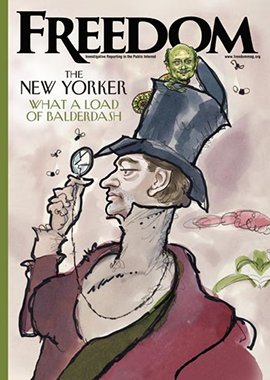The revolting crimes have been setting new growth records each year. In fact, if the British Home Office’s 2024 National Referral Mechanism and Duty to Notify report is any indication, human trafficking and modern slavery are at their highest levels in recorded history. In 2024, there were 19,125 potential victims of slavery reported to the Home Office, a 13 percent increase over 2023, which was itself a record, according to the authors of the report. “Modern slavery is still a huge problem in the UK.” The most common nationalities of victims were British (23 percent), followed by Albanians (13 percent), then Vietnamese (11 percent). “The number of potential victims who reported labor exploitation only is the highest in a year since the [National Referral Mechanism] began,” the report states, “representing an 8 percent increase from the previous record in 2019.” Again, another record broken. The enslavers must be cheering. There are many types of slavery. Victims are often trafficked for use in forced labor—including as domestic servants or in agriculture—sometimes after forced or arranged marriages. They may face sexual exploitation (forced prostitution) or criminal exploitation (transporting drugs, petty crime or forced begging). And there is another horrifying type of human trafficking covered in the report: slavery for “organ harvesting,” which is still a very real risk today, despite passage of the Human Tissue Act 2004. Some 41 percent of adult slaves are used for labor, while 48 percent of child slaves are used for criminal exploitation. And human trafficking and slavery can be deadly. Twenty-three illegally trafficked Chinese immigrants drowned while harvesting cockles in Lancashire when the tide rushed in. The slavemaster, Lin Liang Ren, was jailed for 14 years for, among other charges, manslaughter. In 2015, the British Parliament passed the Modern Slavery Act, considered at the time to be a world leader in the battle against human trafficking and slavery. Its passage promised to “give law enforcement the tools to fight modern slavery, ensure perpetrators can receive suitably severe punishments for these appalling crimes and enhance support and protection for victims.” 
But the figures in the 2024 Home Office report prove that the legislation has had little real effect in ending, or even lessening, the crimes. This, while the UK spent over $50 million between 2016 and 2023 overseas in the nations most commonly “supplying” slaves—including Albania and Vietnam—in order to reduce the threat of human trafficking. But Albania and Vietnam are two countries still cited as common sources of trafficked slaves in the 2024 report. The UK is so concerned about the lack of impact of its much-heralded 2015 law that a study was conducted to discover why the law had no serious or noticeable impact on eliminating slavery and human trafficking. Dr. Alicia Heys, senior lecturer with the Wilberforce Institute for the Study of Slavery and Emancipation, looked into why the legislation isn’t doing the job. “Prosecution and conviction rates relating to modern slavery in the UK are low,” she said. “The Court Proceedings Database shows that in 2017, 2018 and 2019 collectively, 64 adult offenders were sentenced for modern slavery and human trafficking offences under the Modern Slavery Act. In this same time frame, 22,756 potential victims of modern slavery were referred into the NRM, the UK’s system for identifying and supporting victims of modern slavery. “In 2020, the National Crime Agency estimated there to be at least 6,000–8,000 offenders involved in modern slavery that year. Yet in 2020, there were just 91 prosecutions and 56 convictions for modern slavery offenders.” University of Liverpool Professor of Politics Alex Balch has also studied why the legislation has had so little impact. “The theory behind the Modern Slavery Act was that if you ‘get tough’ on criminals and improve support for victims, you can reduce exploitation,” he said, “but that hasn’t worked—modern slavery is still a huge problem in the UK.” The anti-slavery act does have significant weaknesses. “Businesses now have to report on what steps they are taking to tackle modern slavery,” Balch said. “But there are no penalties if they do not comply, and there has been limited progress on exploitation in supply chains.” So far, suggestions for change have included conducting financial investigations to discover violators of anti-slavery law as well as establishing a non-punishment policy toward victims involved in crime or immigration violations, to encourage them to speak up against their enslavers without fear of arrest or deportation. Some victims “may be afraid of authorities, especially if they have a precarious immigration status or if they have been victimized into criminal exploitation and thus coerced into committing criminal acts,” Heys said. So far, according to the latest report on record, what has been tried in the UK has been a dismal failure when it comes to ending slavery and human trafficking. Put simply, we must do better than that. |
UK Breaks Human Trafficking Records Despite Landmark Anti-Slavery Law
A government report shows Britain’s anti-slavery law isn’t stopping the rise of forced labor and trafficking. Reports, referrals and exploitation are all at record highs.






















